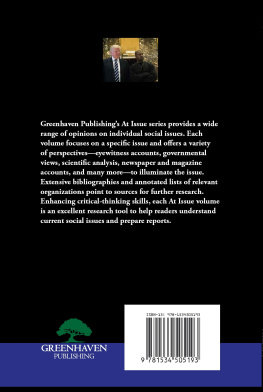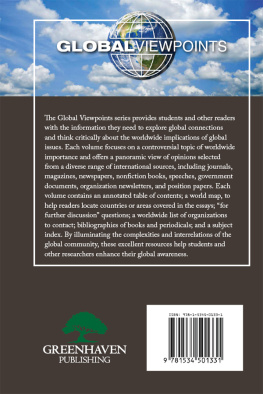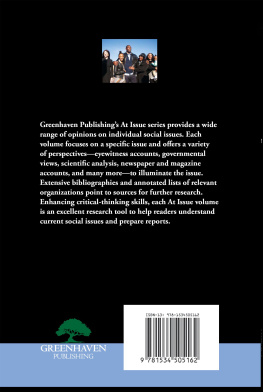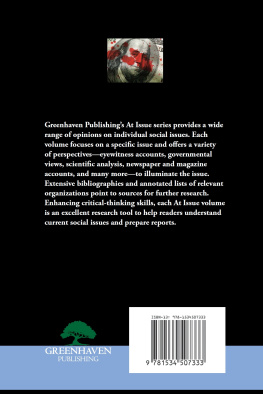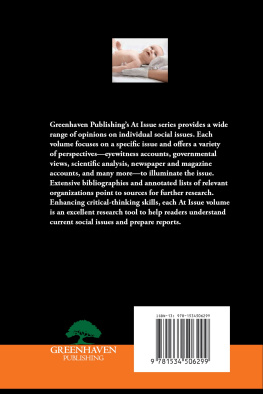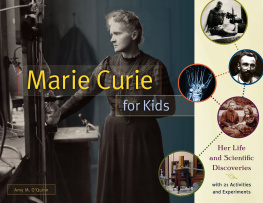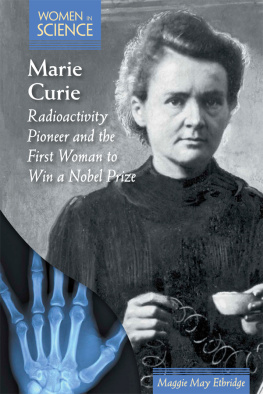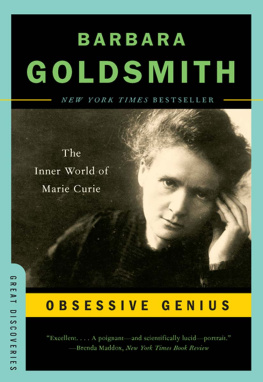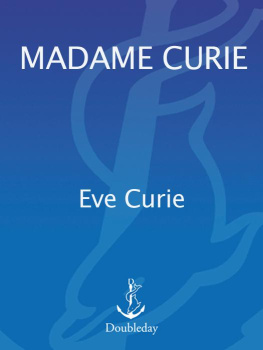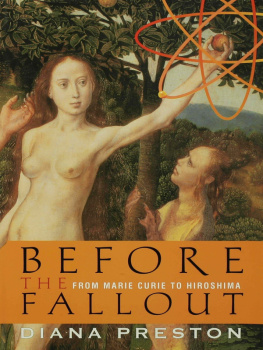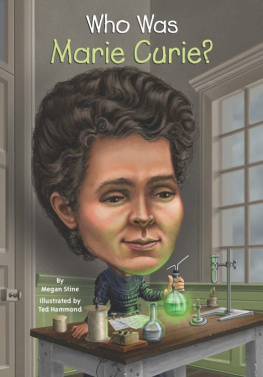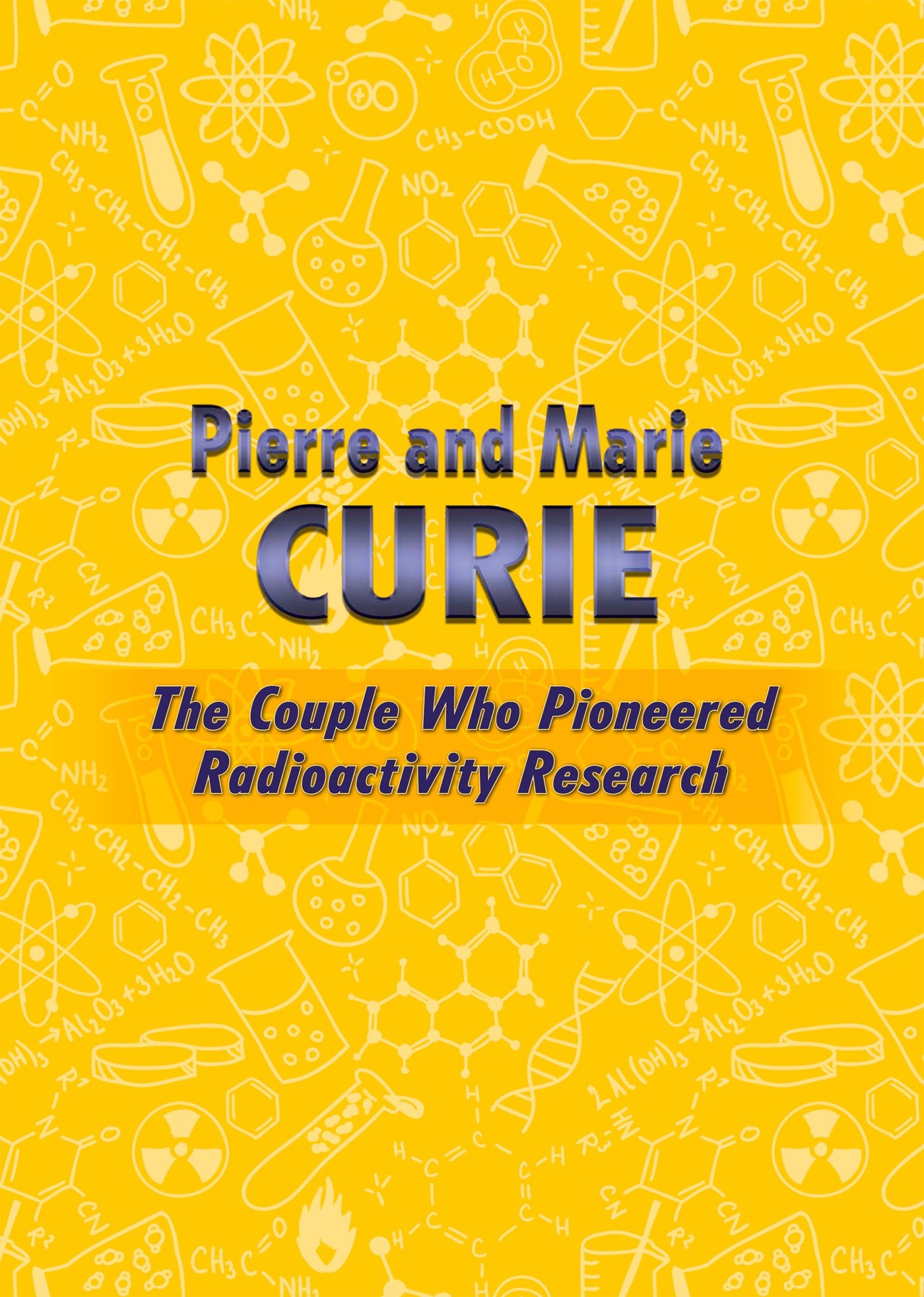Published in 2021 by The Rosen Publishing Group, Inc.
Copyright 2021 by The Rosen Publishing Group, Inc.
All rights reserved.
No part of this book may be reproduced by any means without the written permission of the publisher.
Names: Idzikowski, Lisa, author.
Title: Pierre and Marie Curie: the couple who pioneered radioactivity research / Lisa Idzikowski.
Description: New York: Rosen Publishing, 2021. | Series: Scientific collaboration | Audience: Grades 7 to 12. | Includes bibliographical references and index.
Identifiers: LCCN 2019013889 | ISBN 9781725342385 (library bound) | ISBN 9781725342378 (pbk.)
Subjects: LCSH: Curie, Marie, 1867-1934Juvenile literature. | Curie, Pierre, 1859-1906Juvenile literature. | ChemistsPolandBiographyJuvenile literature. | ChemistsFranceBiographyJuvenile literature. | RadioactivityHistoryJuvenile literature. | Discoveries in scienceJuvenile literature.
CPSIA Compliance Information: Batch #BSR20. For further information contact Rosen Publishing, New York, New York at 1-800-237-9932.

Introduction
I n the nineteenth century, many scientific discoveries graced the world scene. Scientists explored South America and the Galapagos Islands, experimented with electricity, and pondered the structure of the atom. Inventors fashioned the telegraph and then the telephone. People traveled by train, and steamships sailed across the Atlantic Ocean. And a new termdinosaur described ancient unearthed fossils.
Two dynamic scientists-to-be were born in the middle of this exciting century: Pierre Curie in Paris, France, and Marie Sklodowska Curie in Warsaw, Poland. By sheer luck, both individuals came through an early life in countries not far removed from political revolutions. They grew up in loving families, obtained educations, and went to college at the Sorbonne in France. At about this time, two scientific discoveries of unusual rays swept the world. These new rays became the talk among scientists. Ordinary people wondered how X-rays could penetrate skin to reveal bones underneath. Pierre and Marie marveled at the Becquerel rays. They decided that Marie would investigate this phenomenon.

Marie Sklodowska Curie and Pierre Curie shared a great love for science and formed a dynamic partnership of scientific experimentation.
Marie jumped into her research and quickly uncovered unexpected results. Pierre decided to put his scientific work aside and team up with his wife. This was the beginning of their great partnership in science. Together, the Curies brought to life two entirely new elements: polonium and radium. Their scientific progress shone around the world and brought both happiness and grief. Pierre disliked attention. Fame was impossible to avoid after the Curies were awarded the Nobel Prize.
Partnerships are challenging. The one between Pierre and Marie was no differentthey each had faults, but their collaboration and the scientific work they produced together was truly great.
Unfortunately for science and the world, fate dealt a cruel hand to the couple who loved science and each other. Pierre suffered a horrendous accident and died young. How could Marie go on? Devastated and depressed, she did. As a single parent and scientist, Marie accomplished much throughout the rest of her life. She continued her research on the discovery she coined radioactivity. She became the first person to be awarded a second Nobel Prize. When World War I came to France, Marie volunteered. Her mobile X-rayequipped vehicles saved many lives.
After the war, Marie concentrated on her laboratory. She wanted it to be the best place for scientific research about radioactivity, and she wished it to continue after she was dead and gone. Marie guided her daughters and watched them develop. One became a scientist, and in many ways she was just like her father. The other became an accomplished pianist and author. Marie kept up with the scientific world. She made the Radium Institute into a world-class research institution for medical research and physical science. Marie also saw scientists build on her earlier work and struggle through their own experimentation and discoveries. Eventually, the age of atomic science had arrived.
Years after her death, both she and Pierre received a great honor. Their physical remains were transferred to the Pantheon in Paris, the final resting place of Frances greatest citizens.

The Early Years
O ne minute, four-year-old Manya effortlessly read a sentence from her sisters book, and the next, she burst into sobs. Why did her parents seem surprised? Were they upset? Had she done something wrong? No. Manyas parents didnt know that she could read. She was only four.
Young Maria Sklodowska
Maria Salomea Sklodowska, nicknamed Manya (and later known as Marie Curie), was born into a loving family of four siblings on a late autumn day, November 7, 1867. She joined her sisters, Zosia, six years old; Bronia, three; and Helena, eighteen months; along with her brother Jozef, four. Both of Manyas parents taught school, and the family lived in an apartment connected to the school where her mother served as headmistress.
The city of Warsaw, where Manya was born, felt far different than her loving family. No longer did it stand as part of the country of Poland. By the end of the eighteenth century, Poland had been taken over by Russia, Austria, and Prussia. It no longer existed as an official country. Maps showed it instead as Vistula Land. The Polish people had bravely fought in two different revolts. They tried to take back their country. Many died in the failed attempts. Others were sent away to Siberian prisons in cold northern Russia. Because of all this turmoil, Russia sought revenge. The Russian government vowed to stamp out everything that had been Polish. Speaking Polish was against the law. Reading Polish books and practicing the culture was forbidden. And learning Polish was not allowed in school.

Wladyslaw Sklodowski sits for a photo with his daughters Marie, Bronia, and Helena (from left to right).
Names in Poland
In Poland, parents usually gave their children nicknames. In Maries family, Zosia was short for Sophie, Bronia for Bronislawa, Hela for Helena, and Jozio for Jozef. Marie had three nicknames: Manya, Manyusya, and Anciupecio. Also, last names had different spellings according to gender. As a woman, Maries name was Sklodowska, with an a at the end. Men used an i instead of an a, so her father was a Sklodowski. For mixed-gender groups, the i form is used. This practice is still used by many Polish people today.


